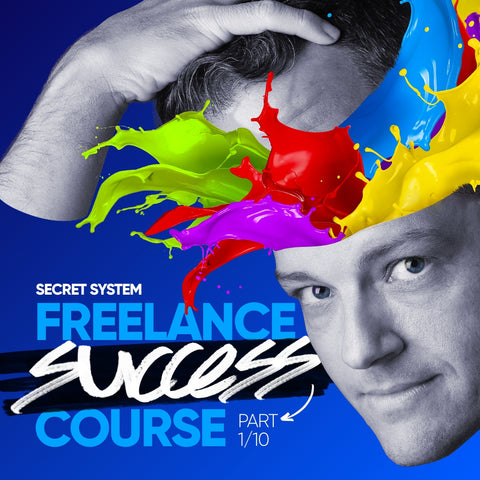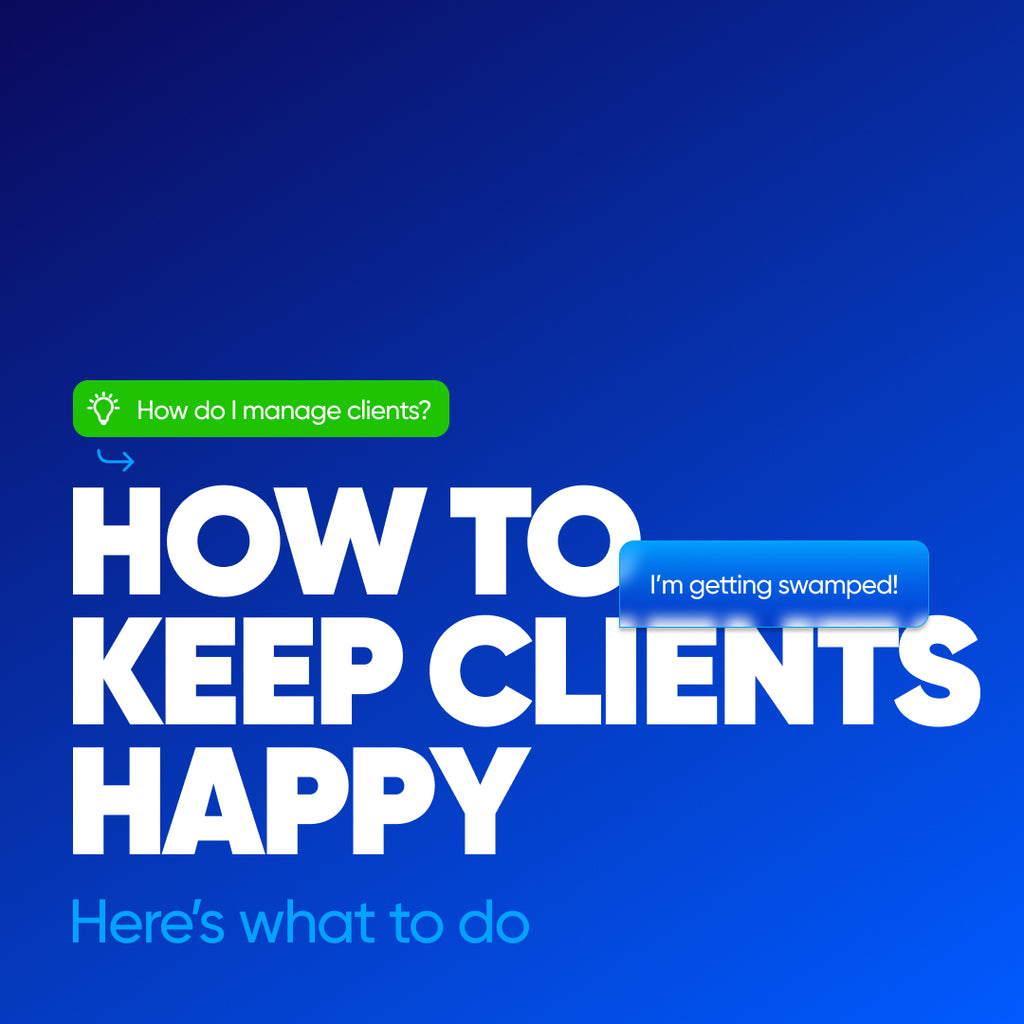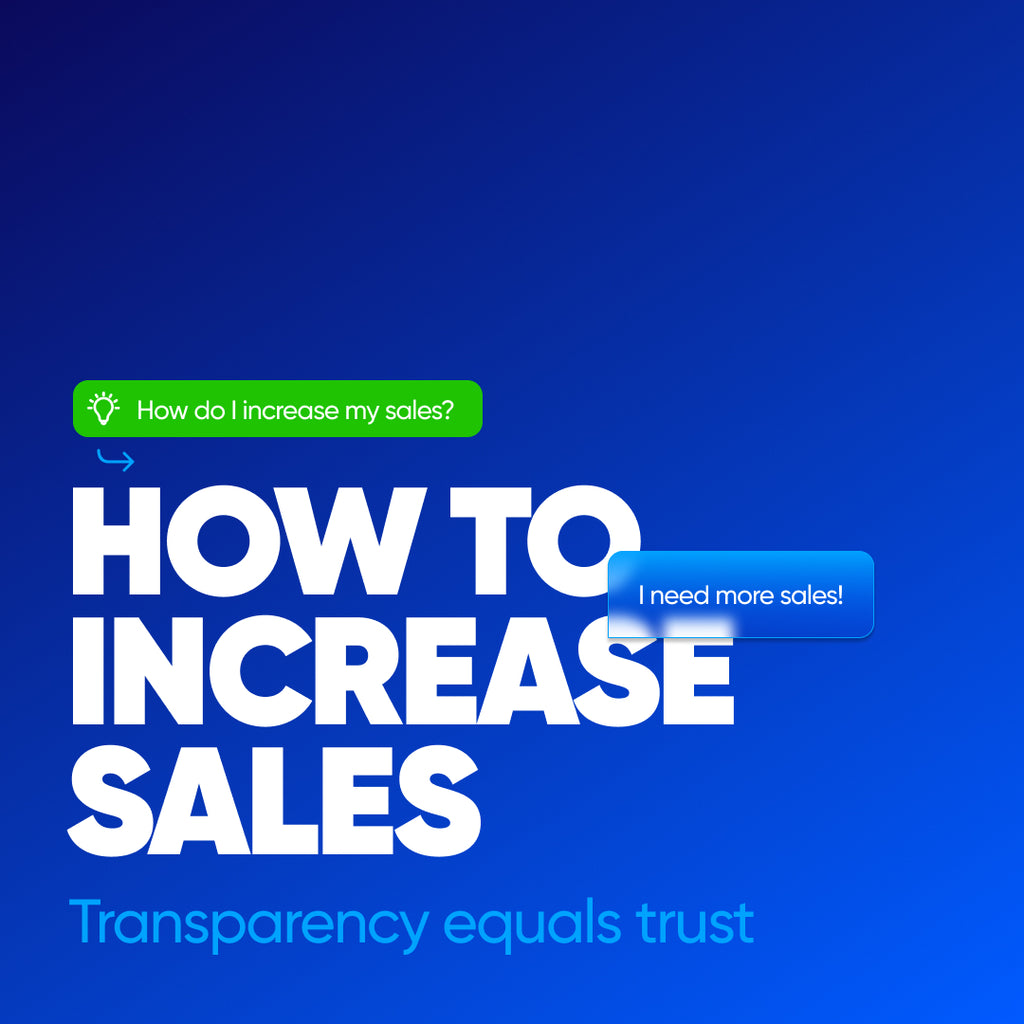Step 1 of my Freelance Shortcut is called the Path. Here, you will create a GOAL and build a daily SYSTEM to increase your freelance revenue.
This is all about answering, HOW DO YOU GET WHERE YOU WANT TO GO?
When I started freelancing, I would get so excited to get a freelance project that I would jump right into the project and then go broke after it was done because I had to repeat the sales process from zero.
I needed a predictable way to know when I would get new projects, so I developed this system I will teach you today.
The goal of my system was to get projects every day and build a predictable income stream.
It’s massively stressful when you have no idea where your next project is coming from, and if you’ve ever felt the same way I have, you’ll love this system.
I’m going into MAJOR detail here and speaking in step-by-step processes, so take notes as you go!
I developed this process after studying Kaizen, the Japanese business philosophy of continuous improvement with the focus on numerous minor adjustments daily that lead to massive growth in the long term.
YOU NEED TO GET BETTER EVERY DAY AND WORK LIKE YOUR LIFE AND THE LIVES OF THE PEOPLE AROUND YOU DEPEND ON. BECAUSE THEY DO!
You owe it to yourself and your family. Failure is truly not an option. Most freelancers won’t follow this because it’s hard initially, so stop here if you can’t handle it.
If you’re dedicated to changing your life, keep watching and learning.
EXPLANATION
You can skip this part to dive right in and start building your system.
But if you want to learn each step and why it’s crucial, here are the steps.
The Path system is broken down into two parts:
Set your goal so you can understand what to do daily to grow your freelance business.
Build your system so you know what to focus on and when.
These two parts include the three pillars of your freelance business: Sales, Marketing, and Production.
Sales is how you build income. I will teach you how to break down your income goal into daily steps so you can build a predictable income stream.
Marketing is how to make you trustworthy. Clients don’t know you and don’t care about you. They simply want to get a job done with the lowest risk possible.
Production is your daily work that needs to be done to complete each project and develop customer confidence so they continue to use your services and refer new business to you.
SET YOUR GOAL
Let’s get started by setting your goal!
The first is setting your income goal and, just as importantly, breaking it down so you know EXACTLY what you need to do to get there.
It’s no good to simply say, “My first goal is to earn $100,000 per year,” but then be unable to break down the goal into steps you can take each day to get there.
I use $100K because it’s a common goal and a great place to start freelancing, as it allows you to live an extraordinary life anywhere in the world you choose. Let’s break it down step-by-step.
I want you to write a contract to yourself. Write this down:
I will earn $100,000 this year freelancing. Sign it, I’ll wait… Now you’re committed.
So let’s break it down:
For easy math, and to achieve this goal, you would need to earn roughly $2,000 every week. Write it down.
There’s nothing average about freelancing. One week can feel like a famine and the next like a feast. So, we’re using averages.
Get used to the swings in income, they’re normal. Ask any successful entrepreneur.
Then, we must lock in how many hours we want to work to plan our days.
In this case, we’ll start with 20 hours. Remember that this system works whether you work 5 or 100 hours a week. Write it down.
The only difference is that you’ll earn SIGNIFICANTLY more when you work more and achieve your goals way faster.
Elon Musk famously said, “Nobody ever changed the world on 40 hours a week,” and he’s right. There is a direct correlation between the number of attempts you make and the number of times you succeed.
Say it with me: “The more I try, the more I will succeed.”
Now, let’s break it down even further:
If you’re just getting started freelancing, your average order value will be low, but even with small projects, you can still achieve your big income goals.
My average order value is $500. Write it down.
You will hit your $2000 per week goal when you get four projects at $500/each every week.
These projects can be divided into hourly, flat-rate, and monthly retainer packages. Don’t worry so much about getting specific $500 projects. This is just to define “How many projects do I need, and what amount of people do I have to contact.”
This next step is the most important to understand as it’s where everyone quits, and if you just stick with it, you’ll win.
When you start, you’ll have a very low conversion rate, meaning you’ll have little to nothing to prove you can do the work, and clients will have to take a chance on you.
The better you get, the more proof you will have to show potential clients, and you’ll be seen as lower risk, so sales will get easier and easier as you go. Eventually, sales will just come to you. But until that time, YOU WORK.
You’ll start off with a 0.5-1% conversion rate, YUP! It’s going to suck, but I started there, and everyone does, there’s no cheat code other than STICKING TO THE SYSTEM.
IF YOU GET JUST A BIT BETTER EVERY SINGLE DAY, YOU WILL WIN.
At a 1% conversion rate, you’ll have to contact 400 people every week, or about 60 per day. This is where people quit. Most freelancers just can’t handle the constant volume, but trust me, if you do it, you’ll get better and better with every repetition.
At this level of repetition, your sales skills will skyrocket. There’s no way around it, if you run a 5k 400 times, you’re going to be way fitter than someone who runs a 5k ten times. It’s your sheer volume that will crush your competition.
With this repetition, you’ll eventually reach a 10-20% conversion rate, and then suddenly, you’ll hit a milestone where clients start hiring you directly.
All of that work, all of that repetition has paid off when you start getting clients organically.
Most freelancers drop out quickly, which is excellent for you, as other freelancers can’t handle the volume at the start and remove themselves from your competition. They do 50-100 contacts, then give up when they don’t get anything, but they quit just before the finish line.
Don’t be one of them! They’re the losers looking for the easy way.
Stay committed with this contract. You can change the values based on your goals, but the system will remain the same.
Write it down: I will earn $100,000 freelancing this year and make over 60 contacts daily, resulting in over four weekly projects. I won’t stop until I hit these targets. Print it, frame it, and put it in your direct line of sight as you work.
You set the goal; the only person that can achieve it is you! Go get it!
Set this goal and you have completed Step 1. Congratulations!
I know this is a lot to take in, and I want you to keep on growing. Text me at 315-791-7511. I’m here to help!
BUILD YOUR SYSTEM
Let’s finish up by building your system!
There are two problems this system solves for you:
- How do I get work with no experience?
- Why do I always go broke after each job?
The biggest difference in your business will come from Sales. This is the income that sustains your life and grows your business.
Your clients want to work with winners, and the brutal reality is that if you can’t make yourself successful, why would a client hire you to make them successful?
If you’re feeling low at any time, that’s the trigger to GO ALL IN. If you can push yourself through the tough times, you will be able to rocket your growth in the good times.
You will always run into problems that can derail you, from personal problems to family problems to sickness.
No matter what happens, you will win when you get up and go after it each day.
Your daily system must be adjustable, and the way to think of this is as a cycle:
Start with Sales and ask yourself, “Do I have a full sales pipeline?” If not, your system must be focused on sales. If you have loads of work in your sales pipeline, you can maintain or slightly reduce time spent on Sales and go to the next step.
Marketing. The question here is, “Are clients reaching out to me?” If not, your system must be more heavily weighted to marketing and creating content so people find you. If clients are reaching out organically, maintain or reduce your time on Marketing slightly and move to the next step.
Production. The question is, “Am I maxing out the hours I want to work daily?” If not, Sales and Marketing will boost the amount of Production you do. If you max out your hours, you must focus more on Production and less on Sales and Marketing. You can also start hiring other freelancers to help you. By delegating work, you’re moving away from being a freelancer and more towards an agency which we’ll cover in a later video.
Based on our 20 hours of work time, we mapped out in our Goals, here are some suggestions to get you started:
No Sales? Focus your day primarily on Sales and Marketing. Sales is short-term, so reach out and get work now. Marketing is long-term and what will truly make your business flourish, as it will eventually begin selling for you.
Lots of Production work? Focus your day primarily on getting your work done and customer service. This is where you impress your clients so they increase their lifetime value with you and refer other businesses. It’s crucial never to take your foot off the gas of Sales and Marketing; however, you should devote at least 25% of your time to these categories.
It’s not enough just saying what to work on. Here are some specific examples I suggest doing for your Sales, Marketing, and Production:
Sales:
- Build a list, contact your target quantity in your goal every day, and add to your customer list so you can follow up.
- Send out at least ten proposals per day on your freelance platform.
- Respond to emails and send out discovery call invitations.
Marketing:
- Work on your branding, like your profile, pitch, social media, portfolio, or website.
- Work on a personal project such as a digital or physical product.
- Write a blog post for your website to help with SEO and grow your organic traffic.
- Write and design a social media post and share it.
- Engage with all comments and likes.
Production:
- Choose up to 3 projects to work on.
- Remove distractions from your studio.
- Set timers to focus on your work. Each timer can start at 30 minutes and then increase as you get better at focus.
If you’re feeling burned out, switch back to sales or marketing.
You now have your Goal mapped out, and the System to achieve it. It’s now on you to achieve it!
I CAN’T WAIT TO SEE YOUR RESULTS!
If this has helped you check out my new book, the Freelance Shortcut. Which is packed with all 10 Steps and includes a workbook with assignments for each step.
Make sure to like, subscribe, and leave a comment so I can keep making these videos to help you.
LET’S KEEP GROWING!

How to Start Freelancing Course - Part 1 of 10 - The Path




